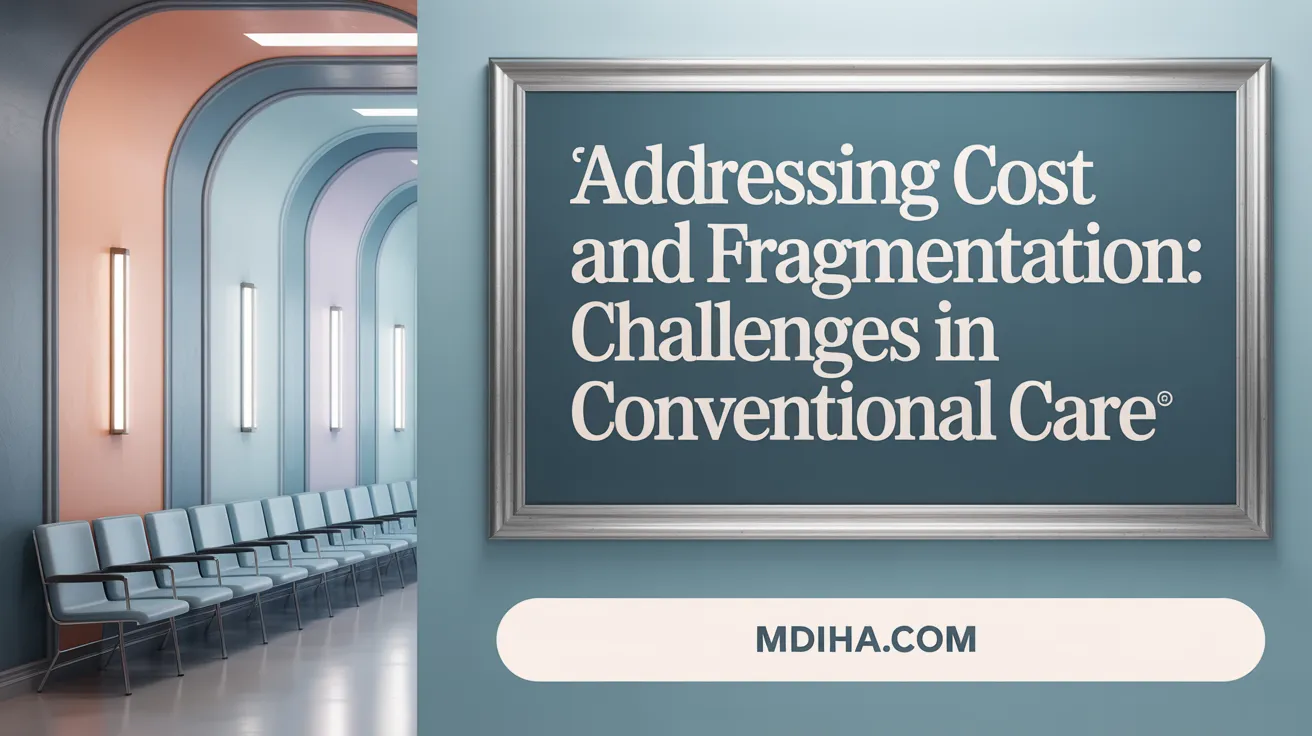Bridging Two Healthcare Paradigms
As the global healthcare landscape evolves, comparing preventive medicine and traditional healthcare models reveals contrasting yet complementary approaches to health and wellness. Preventive medicine focuses on averting illness and identifying risks early, while traditional healthcare tends to emphasize diagnosis and treatment after disease onset. This article explores the principles, benefits, challenges, and integration efforts of these models to understand their role in modern health systems.
Fundamentals and Benefits of Preventive Medicine

What defines preventive medicine and what services does it include?
Preventive medicine involves actions to stop diseases before they start, detect health issues early, and manage existing risks to prevent worsening conditions. Key services encompass vaccinations that protect against infectious diseases, routine health screenings such as mammograms, colonoscopies, cholesterol and blood pressure checks, and counseling aimed at encouraging healthy behaviors.
How does preventive medicine impact chronic disease and healthcare economics?
Preventive medicine plays a crucial role in managing and reducing the burden of chronic diseases like heart disease, diabetes, and cancer, which are leading causes of morbidity and mortality. Early detection through screenings and timely intervention can significantly improve patient outcomes and extend longevity.
Economically, preventive care helps reduce the high costs associated with treating advanced diseases. By intercepting illness in its early stages or preventing it altogether, healthcare systems save billions annually in expensive treatments, emergency visits, and hospitalizations. The economic benefits of preventive care and reduction in healthcare costs are well documented in health economics literature.
Core services: screenings, vaccinations, and counseling
Preventive care delivers a comprehensive package including immunizations, cancer and chronic disease screenings, nutritional guidance, and lifestyle counseling. These services are tailored to individual risk factors such as age, sex, family history, and lifestyle habits, ensuring personalized health maintenance as outlined in clinical preventive medicine guidelines.
Impact on chronic disease management and longevity
Regular preventive care leads to better control of health risks and chronic conditions, thereby extending lifespan and enhancing quality of life. Cancer screenings have been shown to save lives by catching disease early when treatment is most effective.
Economic benefits and healthcare cost reduction
Preventive medicine not only improves individual health but also reduces long-term healthcare expenditures by minimizing the need for costly interventions and hospital admissions. This economic advantage benefits both individuals and the broader healthcare system, as discussed in studies on preventive care economics.
Role in early disease detection and improved outcomes
Screenings and immunizations enable timely diagnosis and treatment, drastically increasing survival rates for diseases like breast, cervical, and colorectal cancers. Early intervention also reduces complications and comorbidities, supported by data on preventive service benefits and outcomes.
Preventive care utilization trends and barriers
Despite its benefits, utilization of preventive services remains suboptimal. Barriers include lack of awareness, cost concerns, inadequate insurance coverage, and social determinants such as limited access to providers. These factors contribute to underuse, highlighting the need for improved education, policy support, and healthcare system reforms to increase access and adherence to preventive care, as explored in the U.S. Preventive Services Task Force reports and healthcare access literature.
Traditional Healthcare Models and Their Challenges

What characterizes traditional healthcare models and their limitations?
Traditional healthcare models primarily focus on diagnosing and treating diseases after symptoms have appeared. This approach tends to be episodic, addressing immediate health problems rather than providing continuous care. Such models struggle with managing chronic diseases effectively, which are often complex and require ongoing attention. Patients frequently experience fragmented care characterized by longer wait times and poor coordination among providers. These factors collectively contribute to less effective health outcomes and a lower overall satisfaction rate among both patients and healthcare providers (Comparing Hospital Systems and Traditional Healthcare, Healthcare System Typology, Traditional healthcare models overview).
What are the economic challenges faced by traditional healthcare systems?
Economically, traditional healthcare systems often operate under fee-for-service reimbursement models that prioritize the quantity of services over their quality. This focus encourages high volumes of individual procedures and visits, which can lead to inflated healthcare costs without corresponding improvements in patient health. Additionally, these systems exhibit inefficiencies such as wasteful spending and lack flexibility to meet the evolving needs of populations, especially those with chronic illnesses. This results in suboptimal cost-effectiveness and challenges in delivering value-based care (Fee-for-Service model and healthcare payment models, Healthcare inefficiencies in high-income countries, Comparing Hospital Systems and Traditional Healthcare).
Traditional healthcare's emphasis on reactive treatment rather than prevention further compounds these issues, making it difficult to reduce long-term healthcare expenditures or improve population health outcomes effectively (Preventive medicine overview, Benefits of preventive care, Preventive medicine and traditional healthcare comparison.
Integrative and Complementary Approaches Bridging the Gap

What is integrative medicine and how does it bridge preventive and traditional care?
Integrative medicine is a healthcare approach that combines conventional biomedical treatments with evidence-based traditional and complementary therapies. This method emphasizes whole-person health, addressing physical, mental, and spiritual needs while focusing strongly on prevention. It integrates natural remedies, mind-body practices such as yoga and meditation, and lifestyle modifications alongside standard medical care to optimize patient outcomes.
Role of complementary and traditional medicine systems
Traditional and complementary medicine systems—like Ayurveda, Traditional Chinese Medicine (TCM), and naturopathy—play a significant role globally, particularly in developing countries. They often serve as primary healthcare resources where access to conventional care is limited. These systems embrace holistic care by focusing on the balance of body, mind, and environment. They emphasize disease prevention and health promotion through natural substances, personalized therapies, and mind-body interventions as described in the WHO Traditional Medicine Strategy.
Evidence-based integration into mainstream care
There is a growing trend to integrate traditional and complementary methods into mainstream healthcare, supported by evidence-based research. Initiatives such as the World Health Organization's Traditional Medicine Strategy promote regulation, quality standards, and incorporation of these practices to improve healthcare access and cultural relevance. Integrative medicine combines best practices from both conventional and traditional systems, aiming for safe, effective, and patient-centered care, including applications highlighted in clinical preventive medicine.
Benefits and challenges of adding natural and mind-body therapies
Benefits include enhanced patient engagement, improved stress management, and complementary support in chronic disease prevention and symptom management. Mind-body therapies contribute to anxiety and pain reduction, while natural remedies can bolster wellness and recovery. However, challenges remain, such as ensuring scientific validation, standardization, safety monitoring, and overcoming healthcare system reimbursement structures that favor conventional reactive care over preventive and integrative approaches (reimbursement challenges).
Cultural and global perspectives on traditional medicine
Traditional medicine is deeply rooted in cultural beliefs and local knowledge systems worldwide, making it more accessible and acceptable in many communities. Countries like India, China, and various African nations have long-established policies supporting these practices within their healthcare frameworks (traditional medicine in developing countries). There is a global recognition of the need to respect indigenous knowledge, protect traditional resources, and empower communities while ensuring equitable access to effective and safe traditional healthcare (WHO traditional medicine policy).
| Aspect | Details | Importance |
|---|---|---|
| Integrative Medicine | Blends biomedical and complementary therapies | Holistic, prevention-focused care (Integrative medicine approaches |
| Traditional Medicine Systems | Ayurveda, TCM, naturopathy, others | Primary care in many developing regions (Traditional and Complementary Medicine) |
| Evidence-based Integration | WHO strategies, clinical trials | Safety, effectiveness, policy inclusion (Evidence-based prevention |
| Benefits of Natural/Mind-Body Care | Stress relief, chronic disease support, enhanced well-being | Complements conventional treatments (Mind-body interventions) |
| Challenges | Scientific validation, regulation, reimbursement | Critical for broad adoption and safety (Challenges in preventive medicine |
| Cultural Significance | Rooted in local and indigenous knowledge | Enhances cultural competence and access (Traditional medicine and culture |
Healthcare System Models and Preventive Care Integration
How do different healthcare system models affect preventive care integration?
Healthcare systems globally are categorized into four main types: Beveridge Model, Bismarck Model, National Health Insurance (NHI) Model, and Out-of-Pocket models.
-
Beveridge Model: Government-financed and provided through tax revenue, seen in countries like the UK and Spain. This model supports universal access, enabling broad and consistent preventive care coverage.
-
Bismarck Model: An insurance-based system funded by employers and employees, with private providers as in Germany and Japan. This model offers widespread coverage facilitating preventive service delivery through structured insurance.
-
National Health Insurance Model: Combines Beveridge funding with private providers, used in Canada and South Korea. It balances universal coverage with private care sectors, promoting access to preventive care.
-
Out-of-Pocket Model: Predominant in low-income countries where individuals pay directly for healthcare. High costs create access barriers, limiting preventive care uptake.
In the U.S., the healthcare system encompasses elements of all these models, mirroring veterans' care (Beveridge), Medicare (NHI, employer insurance (Bismarck, and uninsured populations (Out-of-Pocket. This mixed system complicates uniform preventive care access and consistency.
What policy advances improve preventive care access in complex healthcare systems?
Policy initiatives in complex systems like the U.S. strive to enhance preventive service uptake through:
-
Affordable Care Act (ACA): Expansion of insurance coverage and the requirement that many plans cover preventive services without out-of-pocket costs.
-
Navigator Programs: Assistance for consumers to find affordable coverage supporting preventive care access.
-
U.S. Preventive Services Task Force (USPSTF): Evidence-based guidelines promoting standardized preventive interventions (U.S. Preventive Services Task Force guidelines).
-
Addressing Social Determinants: Acknowledging factors such as cost, transportation, and provider availability through community engagement and policies aiming at equity (Social determinants and preventive care.
Despite advancements, coverage gaps and social barriers continue to impede access, highlighting the need for ongoing policy refinement and comprehensive community strategies.
Together, the healthcare system model influences how preventive care is integrated and accessed, with universal coverage models generally fostering better preventive health outcomes. Complex systems like that of the U.S. require multifaceted policy solutions to reduce disparities and promote consistent preventive care delivery.
Innovations and Challenges in Delivering Preventive and Integrative Care
What innovations support expanded access to preventive and integrative care?
Preventive and integrative care have gained new momentum through technology and emerging clinical practices. Virtual care platforms, including telehealth visits, provide convenient access to medical advice and screenings without geographic constraints. Wearable devices and health apps empower patients to monitor vital signs, physical activity, and lifestyle factors in real time, improving engagement and supporting personalized preventive strategies.
Specialized lifestyle medicine clinics promote evidence-based interventions centered on six pillars: whole-food plant-based nutrition, regular physical activity, stress reduction, avoidance of toxic substances, adequate sleep, and healthy relationships. These clinics align closely with integrative medicine approaches that combine conventional and natural treatments to enhance patient outcomes comprehensively.
What challenges hinder preventive care delivery and utilization?
Despite these advances, preventive care faces significant barriers. Financial reimbursement models often prioritize reactive, illness-focused treatment over prevention, making it difficult for providers to secure funding for long-term preventive services. This economic emphasis also discourages investment in research and implementation of preventive programs.
Medical education frequently lacks adequate training in nutrition and prevention, limiting healthcare providers' ability to counsel patients effectively on lifestyle modifications. Additionally, patients commonly face obstacles such as limited awareness of preventive benefits, costs, transportation issues, and other social determinants of health that restrict access to preventive services.
How can patient engagement be enhanced in preventive care?
Personalized preventive recommendations presented during primary care visits have shown promising acceptance among patients. Clear, individualized guidance builds trust and motivates adherence to screenings, immunizations, and lifestyle changes. Leveraging technological tools, including patient portals and apps, facilitates shared decision-making and empowers patients as proactive partners in their health journey.
Addressing educational gaps, financial barriers, and incorporating innovative technology collectively can strengthen preventive and integrative care, ultimately improving population health outcomes.
Comparative Patient Perspectives and Outcomes in Preventive vs. Traditional Models
How do patient outcomes and perceptions differ between preventive and traditional care?
Patients receiving care with a preventive focus often report higher satisfaction than those in traditional models. Preventive care emphasizes early detection and holistic management, resulting in better chronic disease control such as improved blood pressure and cholesterol levels. For instance, members of personalized preventive programs show greater adherence to screenings like mammograms and colonoscopies compared to national averages (personalized preventive healthcare model, Benefits of Preventive Medicine). Integrative and complementary medicine, which includes mind-body practices and natural remedies, is widely utilized alongside conventional care and is associated with increased preventive service use (Complementary and Alternative Healthcare, CAM and preventive healthcare behaviors). On the other hand, traditional healthcare models may face challenges with continuity of care and engaging patients in a holistic manner, impacting overall patient satisfaction and outcomes (Comparing Hospital Systems and Traditional Healthcare, Traditional healthcare models.
What barriers affect patient engagement in preventive and integrative care?
Several obstacles hinder patient participation in preventive and integrative care. A lack of awareness about preventive services and mistrust—particularly among minority populations due to historical and current systemic issues—significantly impede uptake (Barriers to preventive care, Medical mistrust and health disparities). Financial challenges and social determinants, like transportation difficulties and residing far from healthcare providers, further restrict access (Social determinants of health and access, Preventive care barriers overview). However, personalized preventive care recommendations delivered during primary care visits, coupled with shared decision-making, have demonstrated effectiveness in motivating patients and improving adherence to recommended preventive measures (Patient interest in individualized preventive care, Preventive care adoption challenges). This tailored approach supports better engagement by addressing individual concerns and preferences (Benefits of preventive medicine.
Use patterns of complementary medicine alongside conventional care
Nearly half of adults have tried complementary and alternative medicine (CAM) such as acupuncture, herbal therapies, or yoga, often in conjunction with conventional treatments (CAM prevalence and usage, CAM and diabetes patient study). CAM users may actually engage more with preventive healthcare services than non-users, suggesting these practices do not deter conventional care but sometimes enhance health awareness (Complementary and Alternative Medicine in Practice. This reflects a patient preference for integrative approaches that provide holistic well-being, combining the strengths of both traditional and modern medical systems (Integrative medicine approaches, Complementary medicine and preventive care).
Role of primary care and personalized medicine in prevention
Primary care providers play a critical role in delivering preventive services, coordinating care, and fostering long-term patient relationships (Primary care role and services, Preventive care in primary settings). Models that emphasize personalization—using guideline-based, individualized preventive care plans—lead to improved health metrics and greater patient trust (Personalized preventive care effectiveness, Primary care and prevention models). Shared decision-making during appointments strengthens patient motivation to maintain preventive behaviors (Patient motivation through shared decision-making). The integration of personalized medicine and expanded access to preventive care through new care models improves the likelihood of early intervention and better health outcomes (Innovative healthcare delivery, Preventive care benefits and accessibility).
Toward a Synergistic Healthcare Future
While preventive medicine and traditional healthcare models differ fundamentally in focus, each plays an indispensable role in a comprehensive health system. Preventive medicine’s emphasis on early intervention, lifestyle modification, and holistic well-being offers substantial benefits in reducing chronic disease burden and healthcare costs. Traditional models’ strength lies in acute and specialized treatment capabilities. Integration through evidence-based complementary and integrative approaches, supported by advances in technology and informed policy, promises a more patient-centered, cost-effective, and equitable healthcare landscape. Improving medical education, reimbursement incentives, and addressing social determinants of health are essential to fully realize the potential of preventive care alongside traditional medicine, ultimately enhancing health outcomes and quality of life globally.
